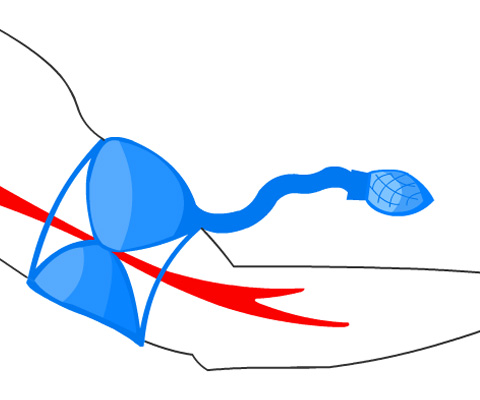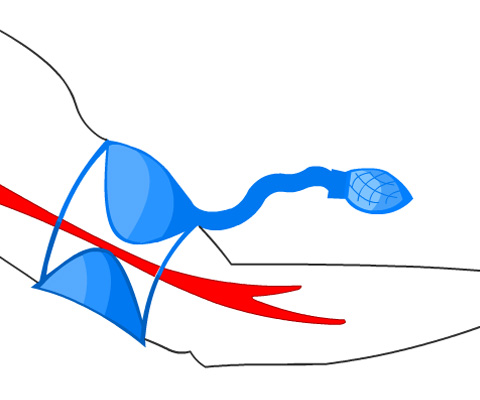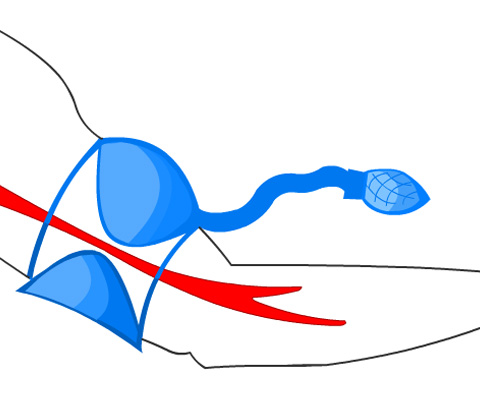Correct fitting
Fig 1 demonstrates a correctly sized cuff that has been applied properly covering two-thirds of the upper arm. The pressure within the cuff is uniformly transmitted to the artery underneath and compresses the artery.
Fig 2 shows a narrow cuff wrapped around the arm. The pressure within the cuff is not adequately transmitted to the artery, which results in a false high blood pressure reading. Similarly, a narrow cuff around a fat arm will give an inaccurate high blood pressure reading.
Fig 3 shows a loose cuff prevents the adequate transmission of pressure to the artery and can result in false high reading.
Fig 4 shows how a large cuff easily transmits pressure to the artery, because the artery can be compressed with relatively less pressure.
In general, a narrow cuff results in over-reading and a large cuff results in under-reading of the actual blood pressure. In obese patients, due to the conical shape of the upper arm, cuff placement can be difficult. Cuff inflation should be fast enough to avoid venous congestion and cuff deflation should be slow enough (2-3 mm Hg/s) to allow time to detect arterial pulsation. Show all.




